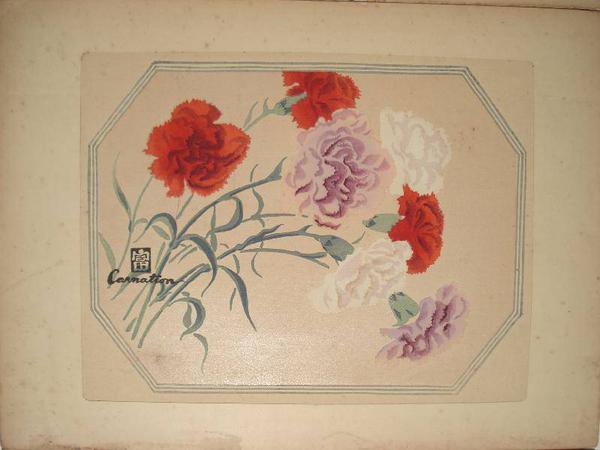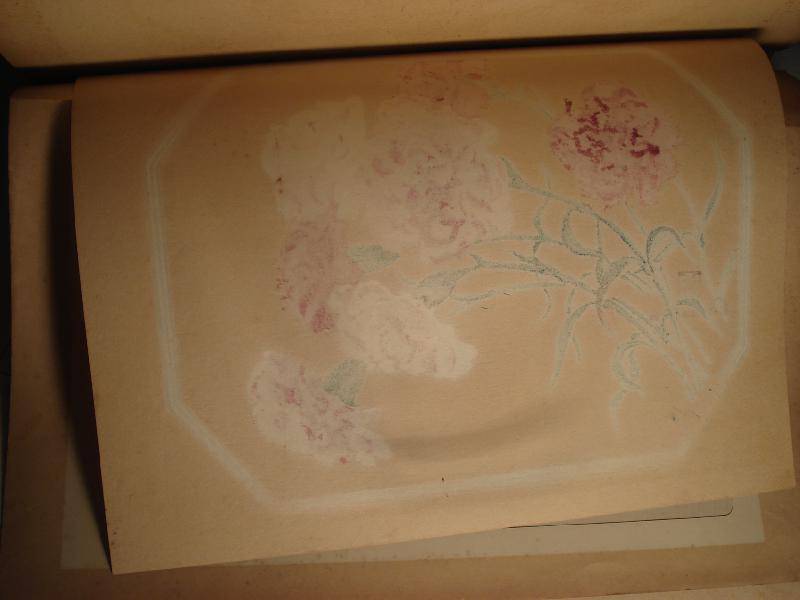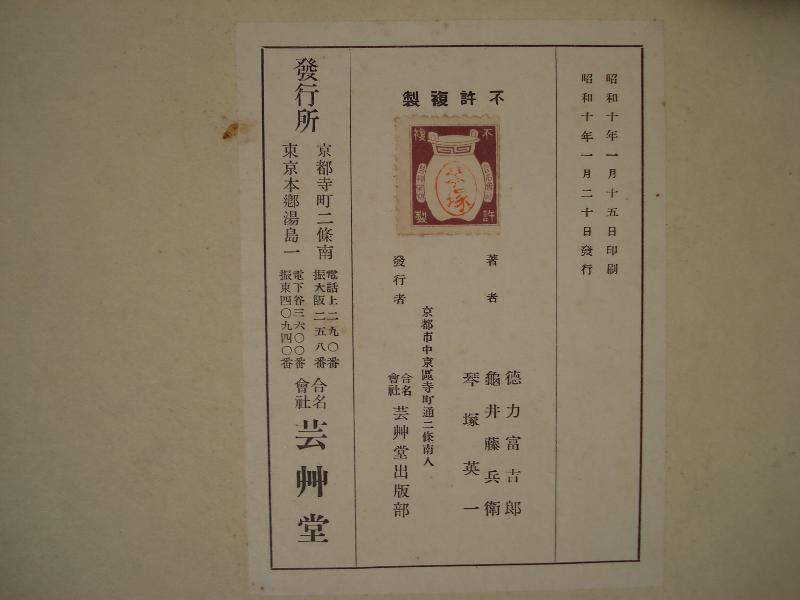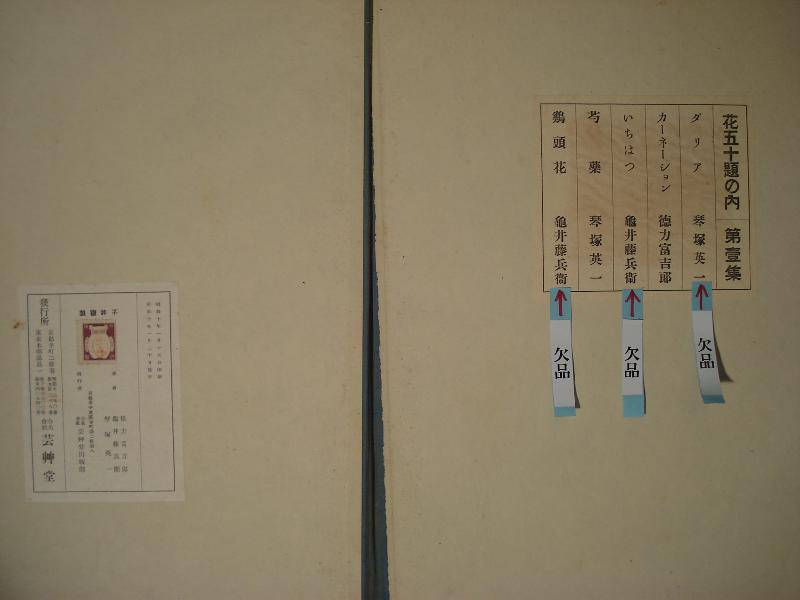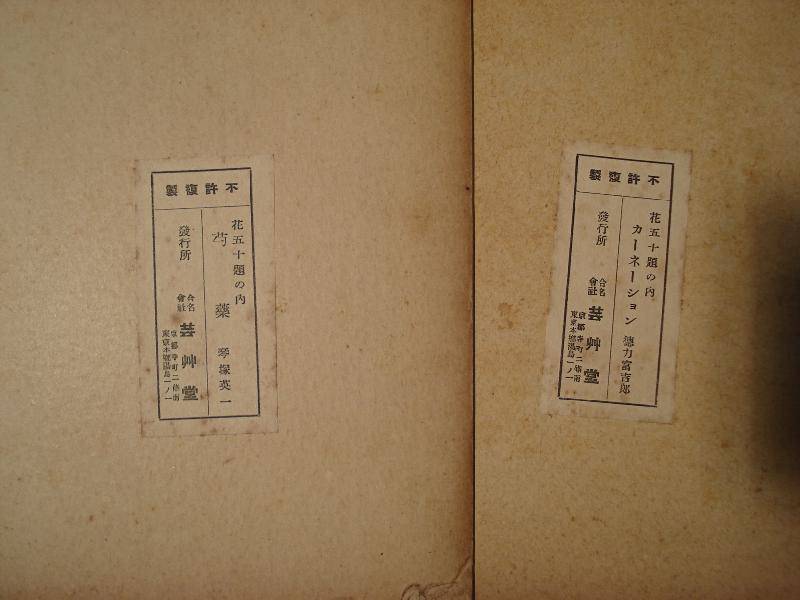| | |
| Artist: | Tokuriki Tomikichiro — 徳力富吉郎 |
| Title: | Carnation |
| Series: | 50 Kinds of Flowers — もくはん自刻花五十題 |
| Date of first edition?: | 20/01/1935 |
| Date of this artwork?: | 1936 (may not be accurate) |
| Publisher (first edition)?: | Unsodo — 芸艸堂 |
| Publisher (this edition)?: | Unsodo — 芸艸堂 |
| Medium (first edition): | Woodblock |
| Medium (this edition): | Woodblock |
| Format (first edition): | Chuban
|
| Format (this edition): | Chuban |
| DB artwork code: | 42371 |
| Notes (first edition)?: |
| The first edition of this series of 50 prints appears to have been sold to subscription buyers via periodic sets of five prints (perhaps each month). With the completion of subscription purchases a second edition of all 50 scenes was then published in April 1936. Subscription sales were a very common method of selling large print series. |
|
| Notes (this edition)?: |
| The following information was taken from the original web listing of this artwork. Note that there may be some inaccuracies:
Monday, 26 July 2010
☆昭和10年発行の「花50題」第1集 芸艸堂 木版2点入り(5点の内3点欠品) (徳力富吉郎1点 琴塚英一1点)です。台紙に木版画が張られた物がタトウに入っています。台紙の大きさは約43.5×31.8㎝です。 ☆タトウに汚れ、しみ、黄ばみ、擦れ、背傷み、等があります。本体の台紙や額部分の紙、カバーの紙、に破れ、ちぎれ、折れ、しみ、黄ばみ、汚れ、等があります。 ☆版画本体には斑点状のしみ、少ヤケが若干あります。少し汚れもあります。 ☆古い物ですので、「古くて汚れた物」が苦手な方、神経質な方は入札をお控え下さい。 |
|
| Series Information: |
| The first edition of this series of 50 prints appears to have been sold to subscription buyers via periodic sets of five prints (perhaps each month). With the completion of subscription purchases a second edition of all 50 scenes was then published in April 1936. Subscription sales were a very common method of selling large print series. |
|
| Artist Bio: |
TOKURIKI TOMIKICHIRO(1902 - 1999) - Tokuriki was born and raised in Kyotoand was influenced by the local art scene from childhood. He stayed in Kyotofor his entire career and was a leader of the Kyoto Sosaku Hanga. He graduated from the KyotoCity School of Fine Arts and Crafts and after that from the KyotoCity Specialist School of Painting. While he began his career in the painting field, he found his true calling in the woodblock print field and was enthusiastic about the reemergence of woodblock prints in 20th century Japanese art. He was influential in the development of new artists later in his career and set up his own publishing company called Matsukyu.
|
|


